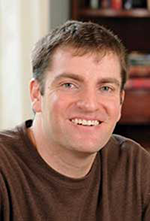White Plains Mulls Business Friendly Zoning Changes

Looking to create an image of White Plains as a city eager to accommodate the business community, Mayor Tom Roach had the chance Wednesday to spend five hours with business leaders from throughout Westchester and outside the county. Roach touted several of the city’s assets – it’s night life, the downtown’s housing, and its proximity to I-287 – but much of his focus was on a proposed zoning change that, if passed, would allow for mixed use in corporate parks where now only office use is allowed.
The proposal would be geared towards the office campuses on Westchester Avenue near Harrison, though some buildings in the eastern part of Mamaroneck Avenue would also be affected. Nearly all of these corporate parks are now zoned for office use, but if this change goes through it could open the door for retail stores, dining and even apartments in these locations.
“The White Plains Zoning Ordinance does not permit either residential or free standing retail uses in the C-O [Campus Office] District,” Planning Commissioner Sue Habel wrote in a March 23 communication to the mayor and Common Council requesting the amendment. “With such limitations, the building owners in the C-O District have not been able to diversify the types of uses in their buildings to respond to changes in the commercial market demand.”
On Wednesday, at a City Showcase held by the Westchester County Association, business leaders were given a bus tour of the corporate campuses, many of which have seen their vacancies skyrocket since the start of the Great Recession. Roach pushed the idea of a zoning change as a way to spark another boom in the city, and when he delivered the event’s keynote speech later he brought up the idea of a promising business wanting to move into one of the vacant buildings but with a plan not currently allowed by zoning regulations.
“What are we going to say? Too bad, because I have some affection for having a vacant office building in my city?” he asked rhetorically. “No. We’re going to be looking at ways to repurpose.”
The thinking behind the zoning change stems from the city’s 1997 Comprehensive Plan, which called for a similar reconfiguring of the city’s core area. With office vacancies in the downtown area high in the mid-90s, the 1997 Comprehensive Plan called for additional retail and housing in the core. Along with creating a more vibrant downtown where residents could dine and shop without getting into their cars, it mitigated the effects of the economic downturn since landlords weren’t as dependent on offices to fill their buildings.
Since the office parks on the outskirts of the city are almost strictly corporate space (extended stay hotels and day care centers have been allowed since 2007), the vacancy rate at these buildings has risen more dramatically; in fact, Habel estimates that the office vacancy rate along the western side of Westchester Avenue in the city is at least 30 percent. Allowing some flexibility in permitted uses, she argues, would both diversifying the economic base in the region and support the existing businesses.
Councilman John Martin, who chaired the 1997 Comprehensive Plan committee, said opening up the corporate parks to other uses was never considered leading up to the 1997 plan or its 2006 revision.
“It didn’t even cross anyone’s mind,” Martin said. “The universal feeling was that those properties were very stable and secure and virtually fully rented, and there was really no reason to contemplate other uses.”
“Now,” he adds, “The world has changed.”
Martin said he is inclined to support the amendment, adding that the time has come for a new comprehensive plan.
In April, the zoning change was referred out by the Common Council to the law department, planning board and environmental office. On Monday, at its May monthly meeting, the council is expected to set a public hearing on the change, probably at the June meeting. It could be voted on the same night.
“My take is that there’s a lot of support for this from the council,” said Council President Beth Smayda. “We’re going through the review process right now.”
The change would affect nine properties on Westchester Avenue and three on Mamaroneck Avenue near the entrance to the Hutchinson River Parkway.

Adam has worked in the local news industry for the past two decades in Westchester County and the broader Hudson Valley. Read more from Adam’s author bio here.
